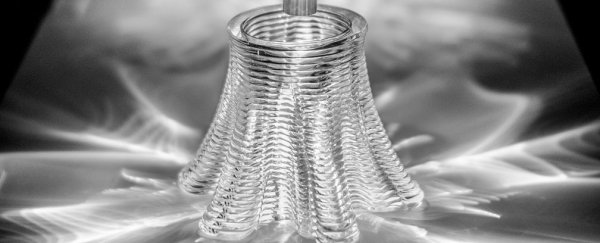3D printing was already a transformative technology when it was limited to basic plastic filament, but with scientists applying the same concept to all sorts of different materials - like graphene, DNA, and brain matter - it seems there's no limit to what additive manufacturing can do.
Now researchers at the Massachusetts Institute of Technology (MIT) in the US have unveiled a process for 3D printing using yet another medium, although this one's a bit of a golden oldie: glass. The team has developed a system called G3DP, which they say is the world's first fully functional material extrusion method for 3D printing optically transparent glass.
In a stunning video of the process in action, you can see how layer upon layer of glass is intricately assembled to create beautiful, elaborate structures, with a level of digital precision that traditional glass blowing couldn't hope to match. As James Vincent put it at The Verge, "The method is mesmerising to watch, with the coils of glass stacking up like a thick gelatinous glaze or poured honey." Yep, that about sums it up.
The technique, detailed in a paper online, is essentially a mixture of conventional glass making with a digitally controlled nozzle that layers glass according to designs drawn up in a 3D CAD program. The trick is bringing all the various components together such that the 3D printer can handle the extremely high temperatures required. The Kiln Cartridge above the printer nozzle operates at approximately 1,037 degrees Celsius! Thermal imaging flaring in the video reveals they're not kidding around.
MIT's focus isn't just on the finery of the physical forms – the researchers are as much occupied with the way light flows through these previously impossible glass structures. "The tunability enabled by geometrical and optical variation driven by form, transparency and colour variation can drive; limit or control light transmission, reflection and refraction, and therefore carries significant implications for all things glass," the team said in a statement.
That's one way of putting it, or you could skip to 3:08 in the video and see what happens when you shine a light into these artworks. Woah… that's amazing.
